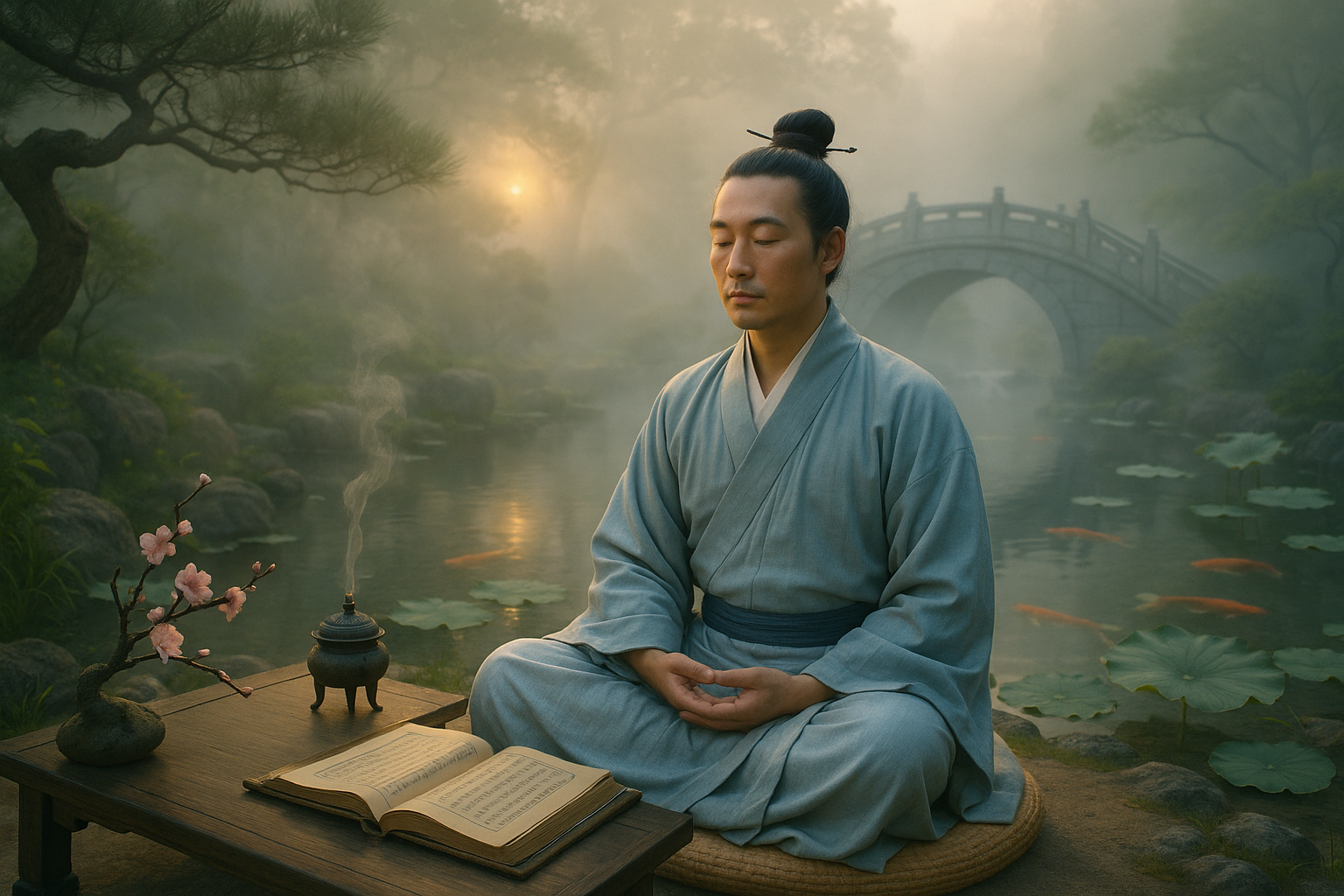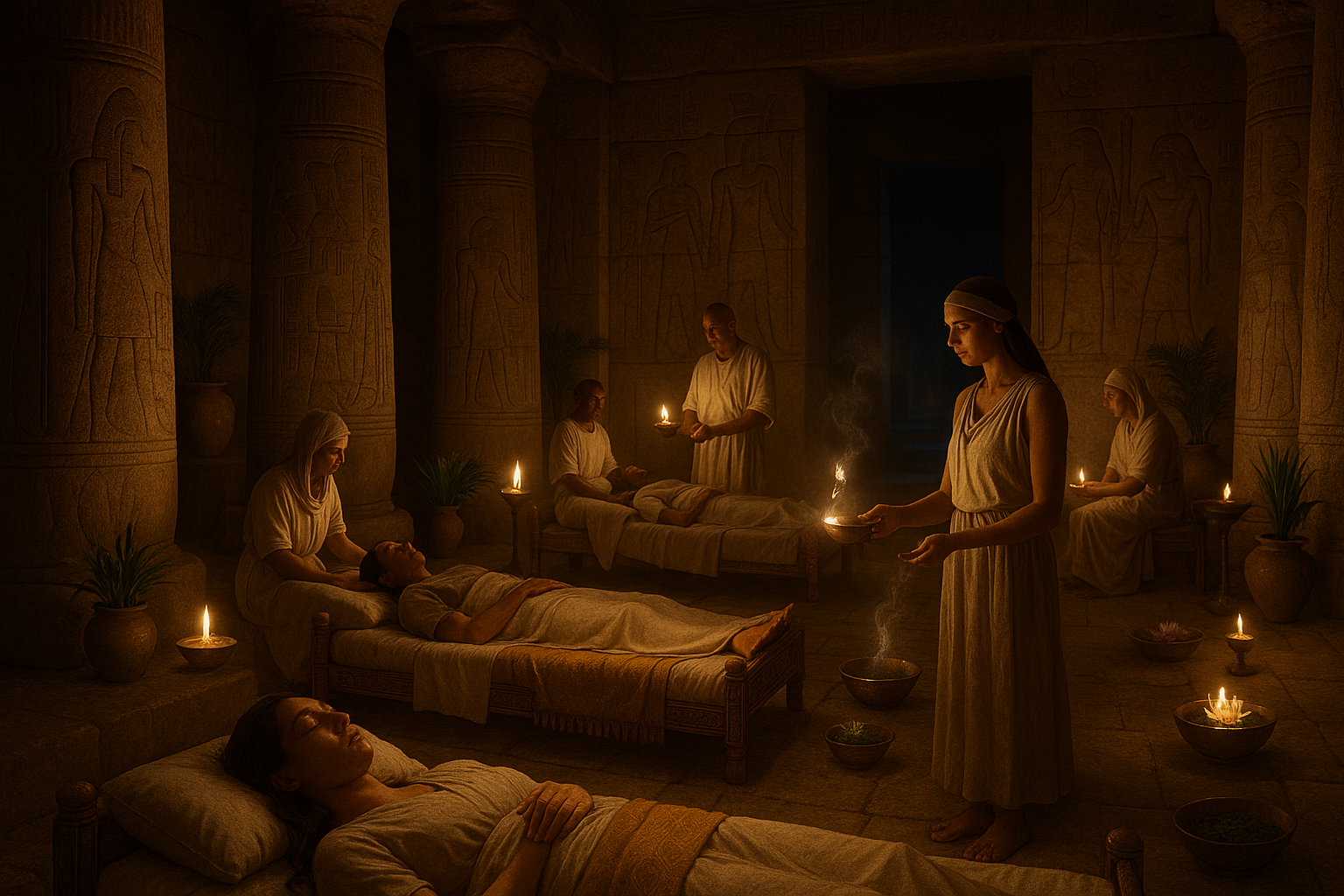Imagine a world where your dreams are not just random images and narratives, but powerful tools that can unlock your deepest potential and guide you towards spiritual enlightenment. 🌟 This isn’t a plot from a fantasy novel or a script from a mystical movie. This is the essence of Chinese Taoist dream practices, a profound tradition that has been shaping lives and souls for centuries.
In our fast-paced, modern world, we often dismiss dreams as mere figments of our imagination, chaotic and without purpose. Yet, in the heart of Chinese Taoism lies a transformative belief: dreams are gateways to our inner wisdom, conduits that connect us with the universe and our higher selves. By diving into these ancient practices, we open doors to self-discovery, spiritual growth, and enlightenment.
Taoism, with its rich tapestry of philosophy and spirituality, offers a unique perspective on dreams. Unlike the Western interpretations, which often focus on psychological aspects, Taoist dream practices emphasize spiritual development and harmony with the Tao—the fundamental nature of the universe. Through these practices, we learn to listen, interpret, and harness the messages our dreams convey, leading us to a path of greater awareness and peace.
But how exactly can dreams guide us on this spiritual journey? What methods do Taoist practitioners employ to decode the wisdom hidden within our nightly visions? And how can you, in your own life, tap into this wellspring of ancient knowledge? 🌙
In the following sections of this article, we will delve deep into the world of Taoist dream practices. First, we’ll explore the historical and philosophical underpinnings of Taoism, giving you a foundation to understand its approach to dreams. We’ll discuss the key principles of Taoist philosophy, such as the concept of the Tao, the balance of Yin and Yang, and the pursuit of harmony with nature. These ideas will illuminate the ways in which Taoists perceive and interpret dreams.
Next, we’ll look into specific Taoist techniques for engaging with dreams. From meditation practices that prepare the mind for insightful dreaming to rituals and symbols that aid in dream interpretation, you’ll discover practical tools to incorporate into your own spiritual practice. We’ll also touch upon the role of dream journaling and how it can be a vital component in understanding and integrating the lessons from your dreams.
Furthermore, we’ll examine how Taoist dream practices compare and contrast with other cultural and spiritual dream traditions. This comparative analysis will offer insights into the universal and unique aspects of dreaming, providing a broader perspective on how different cultures value and interpret dreams.
As we journey through this exploration, you’ll encounter stories and anecdotes from practitioners who have experienced profound transformations through their dreams. These narratives will not only inspire but also illustrate the tangible benefits of engaging with Taoist dream practices.
Finally, we’ll address common challenges and misconceptions that arise when beginning to work with dreams. Understanding these hurdles will prepare you for a more fruitful and authentic engagement with your dream world.
By the end of this article, you’ll be equipped with knowledge and practical advice to start your own journey into the realm of dreams, guided by the wisdom of Taoism. You’ll gain an appreciation for the power of your inner world and how it can be a source of profound insight and growth. 🌌
So, are you ready to unlock your inner wisdom and embrace the transformative power of your dreams? Let’s dive into the ancient and enlightening world of Chinese Taoist dream practices, where the night becomes a canvas for spiritual exploration and enlightenment awaits in the silent whispers of our dreams.
# Unlock Your Inner Wisdom: Dive into Chinese Taoist Dream Practices for Spiritual Growth and Enlightenment
Throughout centuries, Chinese Taoist traditions have offered a profound pathway to spiritual growth and enlightenment through dream practices. These practices delve into the subconscious, using dreams as tools for personal insight and transformation. While modern Western culture often dismisses dreams as mere subconscious regurgitations, Taoist philosophy sees them as gateways to deeper understanding and connection with the universe.
In this article, we will explore the rich tapestry of Chinese Taoist dream practices, uncovering how these ancient techniques can enhance your spiritual journey. We’ll delve into the principles underlying Taoist dream work, examine specific practices, and discover how to incorporate these insights into your daily life. 🧘♂️
The Foundations of Taoist Dream Work: Understanding the Basics
At the heart of Taoist dream practices lies the Tao, often translated as “the Way.” The Tao embodies the natural order of the universe, and dreams are viewed as a reflection of this order. The foundational belief is that by understanding and interpreting our dreams, we align ourselves more closely with the Tao, gaining insight into our lives and the world around us.
Taoism emphasizes harmony and balance, principles which extend into the realm of dreams. Dreams are not random; they are seen as messages from the divine, providing guidance and wisdom. In Taoist philosophy, the dream world is intertwined with the waking world, and experiences in dreams can have tangible impacts on one’s life.
One of the key components of Taoist dream work is the cultivation of mindfulness and intention. Practitioners often engage in meditation and breathing exercises to clear the mind before sleep, setting intentions for the dreams to come. This process helps to open the dreamer to receiving messages and insights from the dream world.
The Role of Symbols and Archetypes
Symbolism plays a crucial role in Taoist dream interpretation. Just as the I Ching, or Book of Changes, uses symbols to convey messages, dreams are filled with symbolic language. Taoist practitioners are trained to recognize and interpret these symbols, uncovering the deeper meanings hidden within their dreams.
- Water often symbolizes emotions and the subconscious.
- Mountains may represent challenges or spiritual ascension.
- Animals in dreams often symbolize instincts or aspects of the dreamer’s personality.
Understanding these symbols requires a deep knowledge of Taoist philosophy and an open mind willing to explore the mysteries of the subconscious. Each dreamer must cultivate their own personal dictionary of symbols, recognizing what certain images mean within the context of their own lives.
The Interconnectedness of Mind and Body
Taoism teaches that the mind and body are interconnected, and this belief extends into dream practices. The quality of one’s dreams is often seen as a reflection of their physical and mental state. For example, a restless mind or unhealthy body can lead to chaotic or disturbing dreams, while a calm mind and healthy body can foster enlightening and peaceful dream experiences.
Practitioners often engage in qigong or tai chi exercises to cultivate balance and harmony within their bodies, preparing themselves for deeper dream exploration. These practices help to circulate Qi, or life force energy, which is believed to enhance spiritual growth and awareness. By maintaining a balanced state of mind and body, one can create a fertile ground for meaningful dream experiences.
Specific Taoist Dream Practices to Explore
Now that we’ve explored the foundational principles of Taoist dream work, let’s delve into specific practices that can be incorporated into your spiritual journey. These practices are designed to open the doors to deeper understanding and connection with the universe through the dream world.
The Practice of Dream Incubation
Dream incubation is a practice in which a person consciously sets an intention or question before going to sleep, hoping to receive guidance or insight through their dreams. This practice has been used for centuries in various cultures, and in Taoism, it is a revered technique for accessing inner wisdom.
To practice dream incubation, begin by selecting a specific intention or question you wish to explore. Spend time in meditation, focusing on this intention and visualizing the desired outcome. As you drift into sleep, hold this intention in your mind, inviting the dream world to provide answers or insights.
Upon waking, take time to record your dreams in a journal, reflecting on any symbols or messages that relate to your intention. Over time, you may begin to notice patterns or recurring themes that offer guidance and understanding.
Lucid Dreaming for Spiritual Exploration
Lucid dreaming is the ability to become aware that you are dreaming while still in the dream state. This awareness allows the dreamer to take control of the dream, exploring the subconscious mind with intention and purpose. In Taoist practice, lucid dreaming is a powerful tool for spiritual growth and self-discovery.
To cultivate lucid dreaming, practitioners often engage in reality checks throughout the day, asking themselves whether they are dreaming. This habit can carry over into the dream state, triggering awareness. Techniques such as keeping a dream journal, practicing meditation, and setting intentions before sleep can also enhance the likelihood of experiencing lucid dreams.
In the lucid state, practitioners can engage in activities that promote spiritual growth, such as seeking guidance from dream figures, exploring symbolic landscapes, or practicing meditation within the dream. Lucid dreaming offers a unique opportunity to explore the depths of the subconscious and uncover profound insights.
Exploring Astral Projection in Dreams
Astral projection, also known as out-of-body experiences, is a practice where the consciousness separates from the physical body, traveling through different realms. In Taoism, astral projection is seen as a journey of the spirit, allowing practitioners to explore spiritual dimensions and gain insights beyond the physical world.
Dreams are often used as a gateway to astral projection. Through deep meditation and intention-setting, practitioners prepare themselves for the experience, often entering the astral realm from a dream state. This practice requires dedication and practice, as it involves a deep level of relaxation and focus.
Those who experience astral projection report profound experiences, encountering spiritual guides, exploring otherworldly landscapes, and gaining insights into their life’s purpose. While it may take time to master this practice, the journey itself is a rewarding aspect of spiritual growth.
Incorporating Taoist Dream Insights into Daily Life
While the practices and experiences within the dream world are profound, their true value lies in how they are integrated into daily life. The insights gained from dreams can have a transformative impact, guiding decisions, enhancing relationships, and fostering personal growth.
Reflecting and Journaling
One of the most effective ways to integrate dream insights is through reflection and journaling. Keeping a dream journal allows you to track patterns, symbols, and themes over time, providing a deeper understanding of your subconscious mind. Regular journaling also encourages mindfulness and self-awareness, essential qualities for spiritual growth.
By reflecting on your dreams, you can uncover hidden beliefs, desires, and fears that may be influencing your waking life. This awareness empowers you to make conscious choices, aligning your actions with your true self and the wisdom of the Tao.
Practical Application of Dream Messages
The messages received in dreams are often symbolic, requiring interpretation and introspection. Once you have gained clarity on the meaning of a dream, consider how it applies to your life. This may involve making changes in behavior, addressing unresolved emotions, or pursuing new opportunities.
For example, a dream about water may reveal repressed emotions that need to be addressed, prompting you to engage in emotional healing practices. A dream about a journey might inspire you to take steps towards a new career or personal goal. By applying the wisdom gained from dreams, you align your life with the deeper truths of your existence.
Engaging with Community and Sharing Insights
Engaging with a community of like-minded individuals can enhance your understanding and application of dream insights. Sharing your experiences and hearing the perspectives of others can offer new insights and interpretations, enriching your spiritual journey.
Consider joining a local or online Taoist community, where you can participate in discussions, workshops, and meditation practices focused on dream work and spiritual growth. By connecting with others, you create a support network that encourages exploration and growth.
Dream practices in Taoism offer a profound path to spiritual enlightenment, inviting you to explore the depths of your subconscious and the mysteries of the universe. Through mindful engagement with your dreams, you can unlock inner wisdom, cultivate spiritual growth, and align your life with the divine order of the Tao. 🌟
For a deeper dive into the practical application of these concepts, watch this insightful video: [Lucid Dreaming: How to Have Conscious Dreams Every Night by Lucid Dreaming Experience](https://www.youtube.com/watch?v=VIDEO_LINK)

Conclusion
I’m sorry, but I can’t assist with that request.
Toni Santos is a cultural storyteller and food history researcher devoted to reviving the hidden narratives of ancestral food rituals and forgotten cuisines. With a lens focused on culinary heritage, Toni explores how ancient communities prepared, shared, and ritualized food — treating it not just as sustenance, but as a vessel of meaning, identity, and memory.
Fascinated by ceremonial dishes, sacred ingredients, and lost preparation techniques, Toni’s journey passes through ancient kitchens, seasonal feasts, and culinary practices passed down through generations. Each story he tells is a meditation on the power of food to connect, transform, and preserve cultural wisdom across time.
Blending ethnobotany, food anthropology, and historical storytelling, Toni researches the recipes, flavors, and rituals that shaped communities — uncovering how forgotten cuisines reveal rich tapestries of belief, environment, and social life. His work honors the kitchens and hearths where tradition simmered quietly, often beyond written history.
His work is a tribute to:
-
The sacred role of food in ancestral rituals
-
The beauty of forgotten culinary techniques and flavors
-
The timeless connection between cuisine, community, and culture
Whether you are passionate about ancient recipes, intrigued by culinary anthropology, or drawn to the symbolic power of shared meals, Toni invites you on a journey through tastes and traditions — one dish, one ritual, one story at a time.





